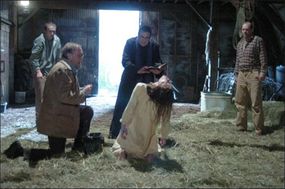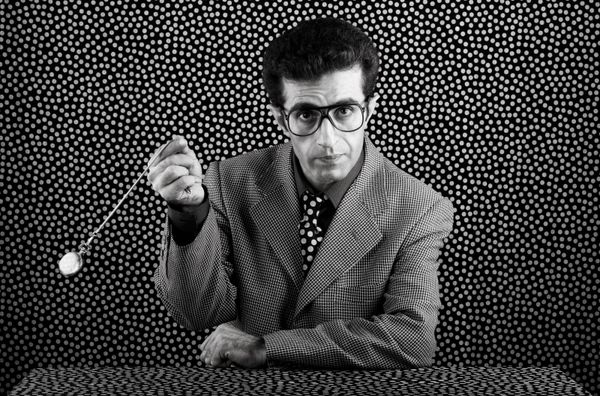
If you've seen the 1973 movie "The Exorcist," you at least have some idea of what exorcism is about. It has to do with ridding a human being of diabolic possession, it's typically associated with Roman Catholic beliefs, and if the movie is any indication, it's very, very scary. You may remember with a shudder the teenage girl whose head spun around, her body in convulsions, her voice that of a demon spewing curses and obscenities while the battered priest of "The Exorcist" fought the devil to save her soul.
This Hollywood version of an exorcism is supposedly based on a real-life exorcism performed on a Maryland boy in 1949. Priests are still performing exorcisms today.
Advertisement
Is exorcism real, or are the subject and the exorcist unconsciously acting out roles from a popular movie? Are there other explanations for what some people call "possession"? In this article, we'll focus on the Roman Catholic exorcism rite because of its tremendous presence in popular culture, thanks to "The Exorcist" and its successors. We'll learn why a priest might perform an exorcism, find out what the ritual involves, take a look at a real-life exorcism and discuss the controversy surrounding the practice.
What is Exorcism?
The Catholic Encyclopedia defines exorcism as "the act of driving out, or warding off, demons or evil spirits, from persons, places, or things, which are believed to be possessed or infested by them, or are liable to become victims or instruments of their malice." In short, it is a ritual performed by a Catholic priest to expel the devil from a person, place or thing.
There are several types of exorcism in the spiritual practice of the Roman Catholic Church:
- Baptismal exorcism: blessing an infant prior to baptism to cleanse it of evil resulting from original sin
- Simple exorcism: blessing a place or thing to rid it of demonic influence
- Real exorcism: performing the Rite of Exorcism to rid a human being of diabolical possession
A "real exorcism" is what most of us think of when we think of exorcism. In this case, the priest-exorcist is dealing with a human being who is possessed by the devil — the devil is inhabiting this person's body.

According to the Church, telltale signs of demonic possession include [ref]:
- Speaking or understanding languages which the person has never learned (different from "speaking in tongues," which is considered a sign of religious ecstasy, not possession)
- Knowing (and revealing) things the person has no earthly way of knowing
- Physical strength beyond the person's natural physical makeup
- A violent aversion to God, the Virgin Mary, the cross and other images of Catholic faith
If you do a Google search for the word "exorcism," you'll find ads for exorcists — Wanda Pratnicka, for example, claims to have "30 years experience with 25,000 successfully performed exorcisms." This makes demonic possession seem like a pretty common occurrence.
But to the Roman Catholic Church, it's rare: It only finds true demonic possession in about one out of every 5,000 reported cases [ref]. So what does it take for the Church to send in an exorcist?
Advertisement


